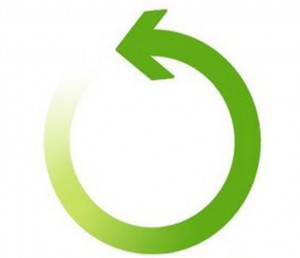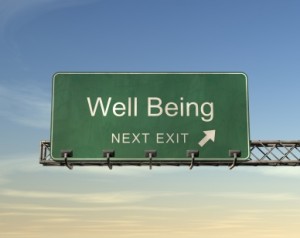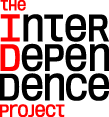Tuesday
Dec282010
And Again
 Tuesday, December 28, 2010 at 03:16PM
Tuesday, December 28, 2010 at 03:16PM
And Again
By Jenny Taitz, Ph.D.
Each year furnishes an opportunity to begin again and so does each moment!
I recently returned from a fantastic meditation retreat in Maui. After living in paradise and spending days practicing yoga and learning from the leading meditation teachers in the world, I felt tremendous equanimity.
And then, I missed the shuttle to the airport by 10 seconds, almost missing my flight as I stood waiting for a pricey taxi. Once I landed, I was famished, nauseous, tired, and lacking any semblance of serenity. My ride home from the airport got stuck in holiday traffic and picked me up an hour late. As I stood in heavy rain waiting for my kind and tardy ride, I felt like I may be good candidate for a television show like Candid Camera or Punked. You thought you were mindful and look at you now! When it rains, it pours.
Sharon Salzberg, a surprisingly practical meditation teacher (previously interviewed by Jonathan Kaplan, Ph.D. on this blog) explains one of the main elements in practicing mindfulness is beginning again. It is inevitable that our mind will wander away from the practice of present focused attention or we will face a challenging situation that affects our equilibrium. In the city we are often faced with distractions or difficult encounters with others. What do we do when we move off our urban mindful path?
Over the years, I have sat with several clients who have relapsed to substance use after years of strict sobriety. Some have described a sense of losing the time they spent abstaining from drugs when they slip into a moment of drug use. I prefer to understand slips as wrong turns. If you are driving and you’ve covered 200 miles, it is challenging to return to the main road after a wrong turn, but you don’t lose the 200 miles you’ve covered. One of the best predictors of successful smoking cessation is number of previous failed attempts. In other words, trying to quit repeatedly means you are more likely to succeed. The thought “I can’t quit, I’ve tried six times,” is entirely unsubstantiated. In fact, the person trying to quit smoking six times is scientifically more likely to succeed in smoking cessation than Mary, who is on her first attempt. When we see each moment as a time to begin again, moments are exciting choices. One of the most important moments is when you notice you’ve been gone --that is the moment to practice self acceptance and kindness to begin again.
To be honest, I practiced beginning again several times in my return travels. When the airport shuttle left, I noticed my mind thinking “how awful and irresponsible.” I returned to the moment and considered what a difficult job it is to shuttle people to the airport and returned to my breath and problem solving. While I waited at the airport, I tried to focus on my breath and appreciate the kindness of a loved one providing me a lift from the airport. I really got stuck when I began to think, “I studied meditation and loving kindness and now I’m grumpy, I might be incorrigible!” That was the moment to begin again rather than get caught in the story in my mind.
We will all repeatedly have moments over the holidays and New Year wherein we stray from our intention and inner wisdom. Are these moments that strengthen our practice and resolve to begin again or do we get stuck? It may be helpful to:
1. Notice when you are not in the present moment or living with intention
2. Bring compassionate awareness to where you are and where you’d like to go
3. Begin again- again and again
By Jenny Taitz, Ph.D.
Each year furnishes an opportunity to begin again and so does each moment!
I recently returned from a fantastic meditation retreat in Maui. After living in paradise and spending days practicing yoga and learning from the leading meditation teachers in the world, I felt tremendous equanimity.
And then, I missed the shuttle to the airport by 10 seconds, almost missing my flight as I stood waiting for a pricey taxi. Once I landed, I was famished, nauseous, tired, and lacking any semblance of serenity. My ride home from the airport got stuck in holiday traffic and picked me up an hour late. As I stood in heavy rain waiting for my kind and tardy ride, I felt like I may be good candidate for a television show like Candid Camera or Punked. You thought you were mindful and look at you now! When it rains, it pours.
Sharon Salzberg, a surprisingly practical meditation teacher (previously interviewed by Jonathan Kaplan, Ph.D. on this blog) explains one of the main elements in practicing mindfulness is beginning again. It is inevitable that our mind will wander away from the practice of present focused attention or we will face a challenging situation that affects our equilibrium. In the city we are often faced with distractions or difficult encounters with others. What do we do when we move off our urban mindful path?
Over the years, I have sat with several clients who have relapsed to substance use after years of strict sobriety. Some have described a sense of losing the time they spent abstaining from drugs when they slip into a moment of drug use. I prefer to understand slips as wrong turns. If you are driving and you’ve covered 200 miles, it is challenging to return to the main road after a wrong turn, but you don’t lose the 200 miles you’ve covered. One of the best predictors of successful smoking cessation is number of previous failed attempts. In other words, trying to quit repeatedly means you are more likely to succeed. The thought “I can’t quit, I’ve tried six times,” is entirely unsubstantiated. In fact, the person trying to quit smoking six times is scientifically more likely to succeed in smoking cessation than Mary, who is on her first attempt. When we see each moment as a time to begin again, moments are exciting choices. One of the most important moments is when you notice you’ve been gone --that is the moment to practice self acceptance and kindness to begin again.
To be honest, I practiced beginning again several times in my return travels. When the airport shuttle left, I noticed my mind thinking “how awful and irresponsible.” I returned to the moment and considered what a difficult job it is to shuttle people to the airport and returned to my breath and problem solving. While I waited at the airport, I tried to focus on my breath and appreciate the kindness of a loved one providing me a lift from the airport. I really got stuck when I began to think, “I studied meditation and loving kindness and now I’m grumpy, I might be incorrigible!” That was the moment to begin again rather than get caught in the story in my mind.
We will all repeatedly have moments over the holidays and New Year wherein we stray from our intention and inner wisdom. Are these moments that strengthen our practice and resolve to begin again or do we get stuck? It may be helpful to:
1. Notice when you are not in the present moment or living with intention
2. Bring compassionate awareness to where you are and where you’d like to go
3. Begin again- again and again
tagged  New Year,
New Year,  commitment,
commitment,  travel in
travel in  Commuting,
Commuting,  Intention
Intention
 New Year,
New Year,  commitment,
commitment,  travel in
travel in  Commuting,
Commuting,  Intention
Intention 




